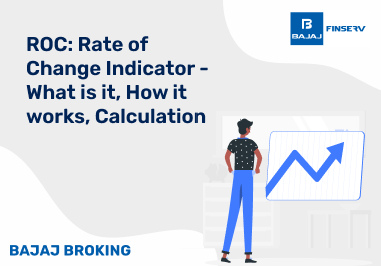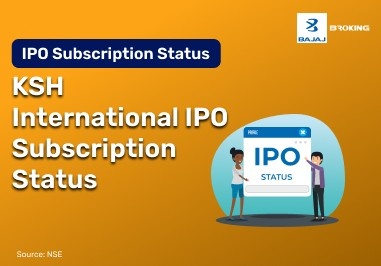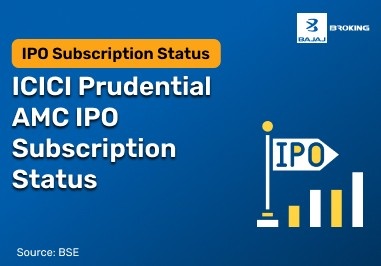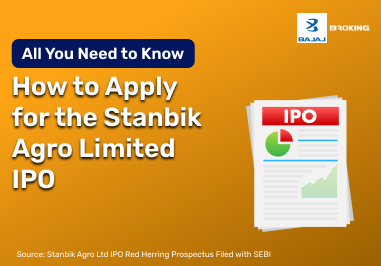A New Fund Offer (NFO) is when an AMC introduces a new mutual fund to investors. Investors can purchase units at a set price (₹10 per unit) during the 10 to 15 day restricted subscription period. The fund is listed after the NFO period, and values change based on its NAV. NFO investors can get into a fund early and potentially profit.
What is a New Fund Offer (NFO)?
When an asset management firm (AMC) offers a new mutual fund to investors, this is called a New Fund Offer (NFO). Investors can acquire units at a set price, usually ₹10 per unit, during the restricted subscription period, which lasts for 10 to 15 days.
The fund is listed after the NFO period expires, and its value changes based on its Net Asset Value (NAV). Investing in NFOs lets investors get in on the ground floor of a fund, which might help them make money over time. This makes them a good choice for anyone who wants to make money over the long term.
New Fund Offer Meaning in Detail
When a business of asset management initiates a new mutual fund scheme in front of people, it amounts to a New Fund Offer. It will be the initial occasion that investors can purchase shares in the fund even prior to the latter beginning to trade in the market.
Investors can buy units at an introductory price (usually ₹10 per unit, which is easy to reach). This is crucial because it gives the fund house the money to start building the portfolio.
A comprehensive Scheme Information Document (SID) from the AMC describes how the fund will invest, the fund manager's qualifications, and the risks. This will give potential NFO investors all the information before investing.
NFO subscriptions are limited to 30 days by SEBI. Once this time is reached, the units in the fund are proportioned to their Net Asset Value (NAV), which fluctuates on a daily basis with the market.
How Does NFO Work in Mutual Funds?
When an Asset Management Company (AMC) starts a new mutual fund scheme, they call it a New Fund Offer (NFO). During the NFO period, investors can buy units of the fund at a set price, which is usually ₹10 per unit.
The scheme will be listed after this first subscription period ends. From now on, the units will be bought and sold based on their Net Asset Value (NAV). The NAV changes every day based on how well the fund's underlying assets are doing.
AMCs typically launch NFOs to give investors access to new market opportunities, certain sectors, or unique investment themes that their current mutual fund schemes might not cover. It's a way for them to come up with new products.
The whole thing starts after SEBI gives its okay. Investors can sign up for a subscription window that usually lasts about 15 days. Once the NFO is over, the money that was raised is put to use according to the scheme's stated goal.
Types of NFOs in Mutual Funds
There are two primary forms of New Fund Offers (NFOs): open-ended funds and close-ended funds. Investors must understand these two to make a decision that fits their financial goals and cash needs.
Open-Ended NFOs
Open-ended NFOs provide investors a lot of freedom. As long as the Net Asset Value (NAV) is current, you can buy or sell fund units after the NFO. This arrangement is ideal for fast money recovery.
It lets you change your investment strategy and access your money. Those who need their money quickly or want to change their portfolio should consider open-ended funds.
Closed-Ended NFOs
On the other hand, close-ended NFOs issue a set number of units and have a maturity date of three to five years. The fund management may carry out long-term plans because of its framework.
They don't need to track daily cash flow. After the NFO, these units can be traded on a stock market, but liquidity may be an issue; best for long-term investors.
How NFO is a Good Opportunity?
An NFO might be an excellent chance since it frequently offers a new investing subject or method that isn't accessible anywhere else. You may add new ideas to your portfolio, such as funds that specialise in new industries like renewable energy or technology.
Also, since the portfolio is developed from the ground up, it doesn't include any assets that aren't doing well. The fund management can choose assets depending on how the market is doing right now, which can be a good thing. For a lot of novice investors, being able to buy at the base price of ₹10 also makes them feel like they can do it.
How to Invest in a New Fund Offer (NFOs) in Mutual Funds
It's not too hard to invest in a New Fund Offer, but you need to grasp what the fund is offering first. The first thing you need to do is find out as much as you can about the NFO's goal, investment strategy, and target sector.
You should also check out the asset management company's (AMC) reputation and the fund manager's track record for running the plan. You may find all of this information in the Scheme Information Document (SID).
You may invest in a number of ways after you've made the decision to do so. You can invest online, call a mutual fund distributor, or go straight to the AMC's website or physical locations.
You will need to fill out the application form and make sure that your KYC (Know Your Customer) information is current. Once you send in your application and the amount of money you want to invest, you will get the units when the NFO period ends.
Additional Read: Is It Good to Invest in NFO?
Things to Keep in Mind Before Investing in NFO Funds
Before you put your money into a New Fund Offer, you should do your own extensive study. You should base your choice on other important considerations because NFOs don't have a history of performance to look at.
Some things to think about are:
The AMC and the Fund Manager: Find out what others say about the Asset Management Company (AMC) and how well it has done in the past. Also, look at the fund manager's prior performance to see how well they have done.
Goal of the investment: To fully understand the fund's goal and approach, read the Scheme Information Document (SID) carefully. Make sure it fits with your personal financial goals and how much risk you're willing to take.
Uniqueness of the Fund: See if the NFO has a theme or approach that no other funds already have. Sometimes, it could be advisable to choose a similar, well-known fund that has a good track record.
Expense Ratio: Know how much the expense ratio will be. A larger expenditure ratio might affect your long-term results; therefore, it's important to think about it.
Additional Read: What is fund of funds
Advantages of Investing in NFOs
A number of reasons why many investors would opt to invest in a New Fund Offer exist. One of the main reasons which makes people interested is getting into a new investing plan at the very beginning.
It is an advantage since the cost of entry is low. The NFOs are highly accessible since units tend to be a flat ₹10. This is more so among individuals who are new in the field of investment or those who have very little cash to invest.
NFOs are also very good for the diversification of your investments. They also tend to invest in new concepts or in small locations that other mutual funds might neglect, and this enables you to introduce something new in your financial portfolio.
Finally, some NFOs, in particular, closed-ended ones, have a lock-in term. This can assist you in adhering to a long-term investment process because it prevents you from making immediate decisions on short-term fluctuations of the market.
Disadvantages of Investing in NFOs
New Fund Offers may be attractive, but the investors must also consider the drawbacks associated with them. A big issue is that no record of previous performances can be referred to.
Prior results cannot be used to find out how the fund will perform in various market conditions, as is the case with established funds. This implies that the decision to make investments is made with reference to the recommended strategy of the fund and the reputation of the manager.
It is also impossible to be certain that the fund will actually do what it is expected to do. The new strategy or theme of the fund house may not work the way it was expected, and this may imply that the investors would not receive as much money back.
Lastly, NFOs, which are close-ended, might not get sold easily. You can either mature or sell them at the stock exchange, where they may not be moving much. This will make it difficult to sell your units when you desire.
Ideal Investors for NFOs in Mutual Funds
NFOs are typically more suitable for professional investors who have a lot of knowledge of the market. Such investors can more easily determine how good a new fund can be without examining its historical performance.
They're also great for risk-takers and long-term investors. These investors accept the risk of a new fund and are patient.
An NFO may prove to be an acceptable solution to you when you are in need of diversifying your portfolio with something different or a speciality that is not offered by the existing funds.
Additional Read - Difference Between IPO And NFO
Conclusion
Concisely, a New Fund Offer will permit investors to become members of a fresh mutual fund scheme at its inception. It admits you at an entry level, often on a unique investing concept.
It is important to evaluate the potential advantages versus the risks, such as it having no performance history. There is much research you have to do before you invest with regard to the objective of the fund and the history of the fund manager.














